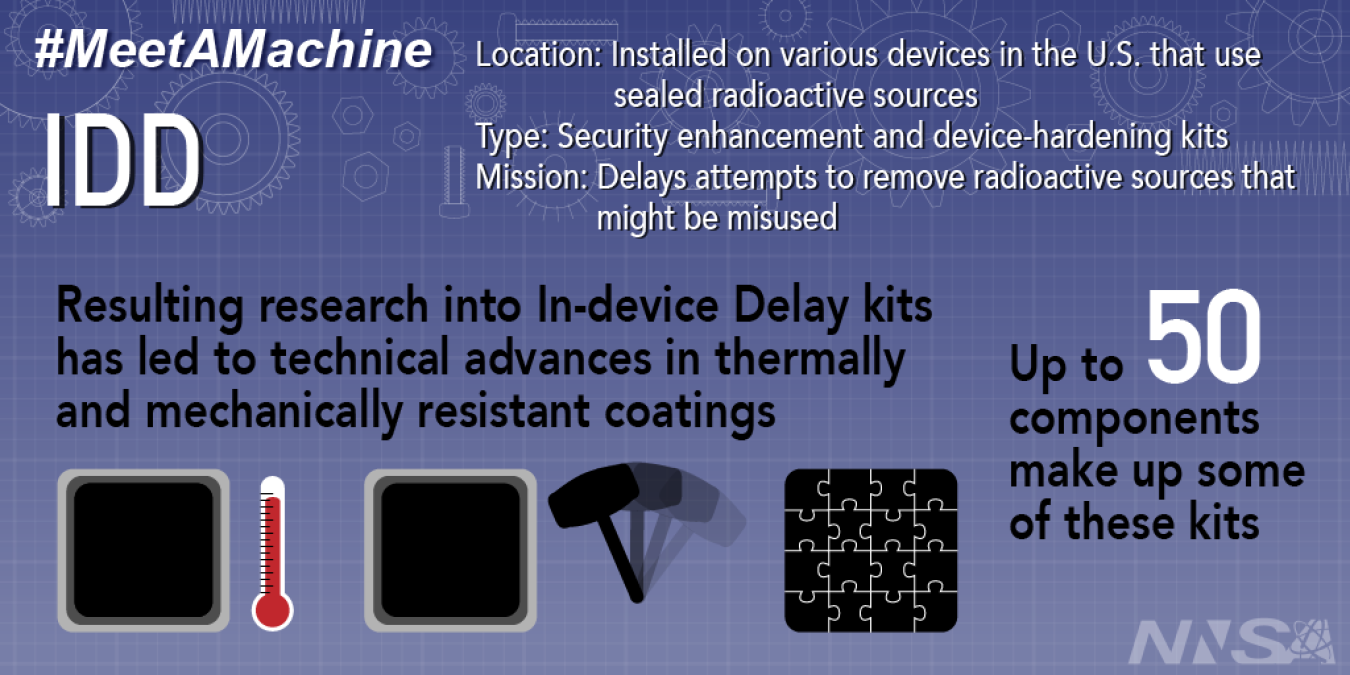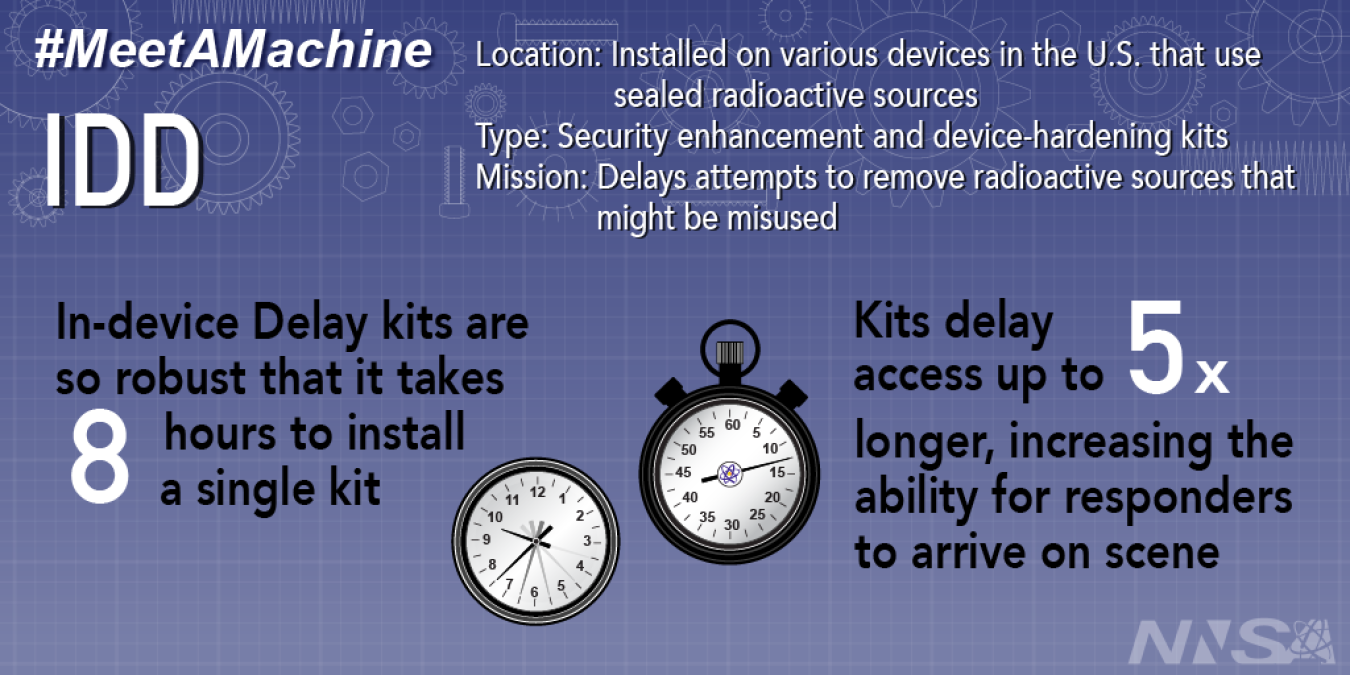In-device Delay (IDD) kits help NNSA achieve its mission to enhance global security by preventing radioactive materials from being used in a...
National Nuclear Security Administration
May 8, 2017


In-device Delay (IDD) kits help NNSA achieve its mission to enhance global security by preventing radioactive materials from being used in acts of terrorism. IDD kits were developed by Sandia National Laboratories in coordination with the manufacturers of irradiation devices that use sealed radioactive sources for roles such as purifying the medical blood supply and supporting research. The kits increase the amount of time it would take to disassemble the device and retrieve the radioactive material inside.
The three main elements of any security system are detection, delay, and response. Time is critical - if a device is illegally tampered with, law enforcement must have enough time after an alarm sounds to reach the site before the adversaries depart with the radioactive material. To this end, IDD kits improve device security by lengthening the time for an adversary to gain access to the sealed radioactive sources within the devices. Some kits are installed by the manufacturer before the device leaves the factory and some are installed after the device has been delivered. Made up of different types of materials and fasteners, IDD kits give law enforcement more time to neutralize the threat.
Interesting fact: Part of the IDD development process includes destructive testing. Many tools that one can find at home improvement stores – such as saws, drills, and torches – have been used to test the durability of materials used in IDD kits.

